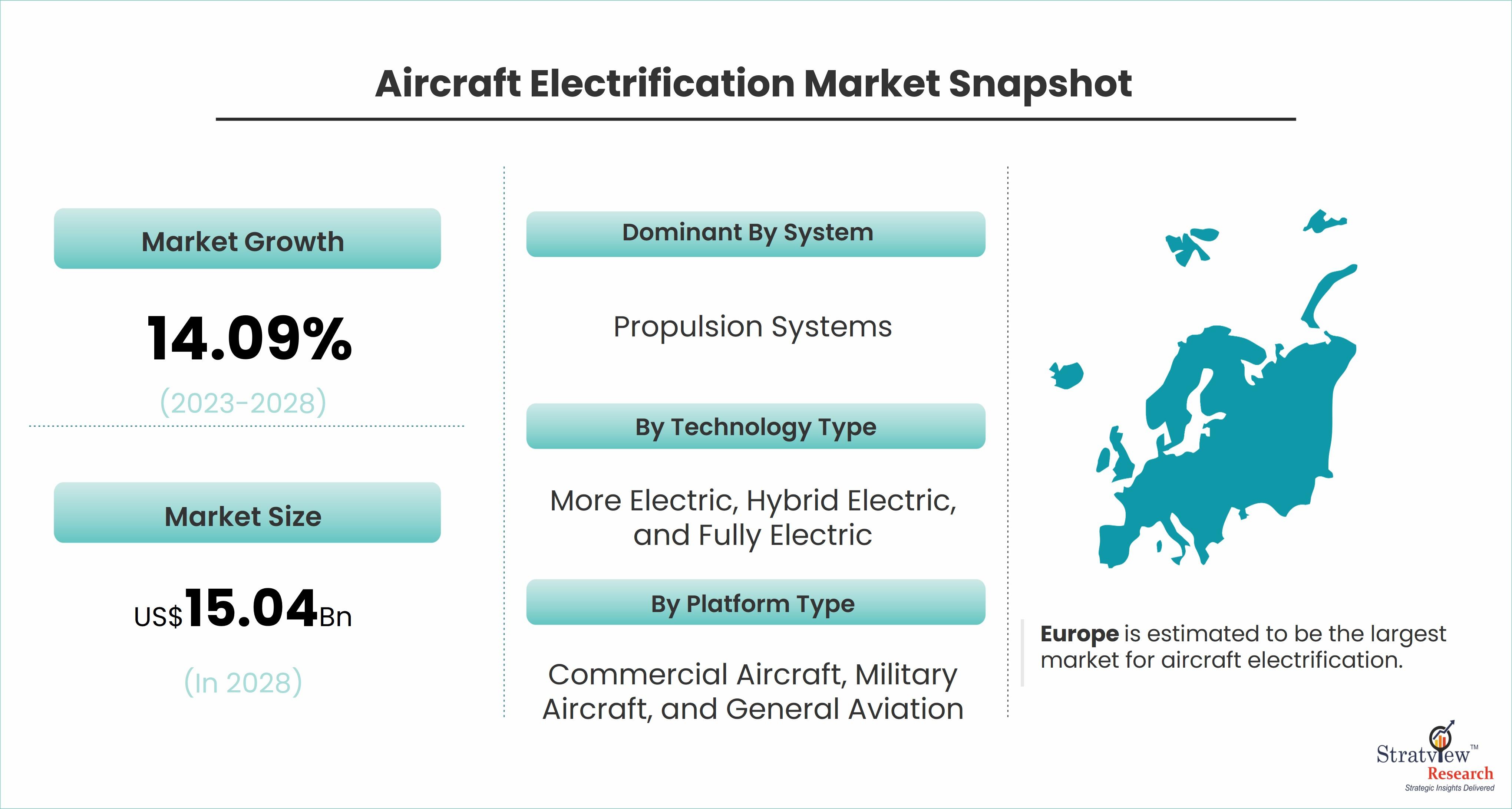The aircraft electrification market is emerging as a pivotal force in shaping the future of aviation, driven by the growing demand for greener, more sustainable travel. Electrification is transforming aircraft systems, from hybrid-electric engines to fully electric planes, and is expected to play a crucial role in reducing aviation’s environmental impact. This article explores the key growth drivers propelling the aircraft electrification market and its potential to revolutionize the aviation industry.
According to Stratview Research, the aircraft electrification market was estimated at USD 6.8 billion in 2022 and is likely to grow at a CAGR of 14.09% during 2023-2028 to reach USD 15.04 billion in 2028.
1. Environmental Concerns and Sustainability Goals
One of the primary drivers of aircraft electrification is the global push for reducing carbon emissions. Aviation currently accounts for around 2-3% of global CO2 emissions, and with increasing pressure to meet climate goals, the industry is seeking innovative solutions to lower its carbon footprint. Electrification presents a promising opportunity to decarbonize aviation by minimizing the reliance on traditional fossil fuels. Governments and regulatory bodies worldwide are setting stricter emissions targets, such as the International Air Transport Association's (IATA) goal of achieving net-zero carbon emissions by 2050, which is accelerating investment in electric aircraft technologies.
2. Technological Advancements
Rapid advancements in electric propulsion systems, energy storage technologies, and materials science are driving the aircraft electrification market. Innovations in battery technology, such as lithium-ion and solid-state batteries, are improving energy density and making electric propulsion more feasible for aircraft. Additionally, lightweight materials and energy-efficient designs are helping reduce the weight of aircraft, further enhancing the potential for electrification. These technological breakthroughs are enabling manufacturers to develop hybrid-electric and fully electric aircraft, with significant progress already made in short-haul and regional flights.
3. Rising Fuel Costs
Volatile fuel prices and the desire to reduce operating costs are pushing airlines and manufacturers to explore alternative energy sources. Electric and hybrid-electric aircraft have the potential to significantly reduce fuel consumption, which not only lowers emissions but also offers financial savings for airlines. As fuel prices continue to rise, the economic benefits of electrification become more attractive, further driving the market.
4. Government Support and Incentives
Governments are playing a crucial role in supporting the transition to electric aviation by offering incentives, subsidies, and research funding. Countries in Europe and North America, in particular, are investing heavily in the development of electric aircraft infrastructure and technology. For instance, the European Union’s Clean Sky program and the U.S. Federal Aviation Administration’s (FAA) Continuous Lower Energy, Emissions, and Noise (CLEEN) initiative are providing financial support and regulatory frameworks that encourage the adoption of electric aircraft technologies.
Conclusion
The future of aviation is electric, with key growth drivers including the push for sustainability, technological advancements, rising fuel costs, and government support. As the aircraft electrification market continues to evolve, it has the potential to transform the aviation industry, paving the way for a more sustainable and efficient future in air travel. The shift toward electric propulsion marks a significant step in the journey toward reducing aviation’s environmental impact and achieving long-term sustainability goals.


